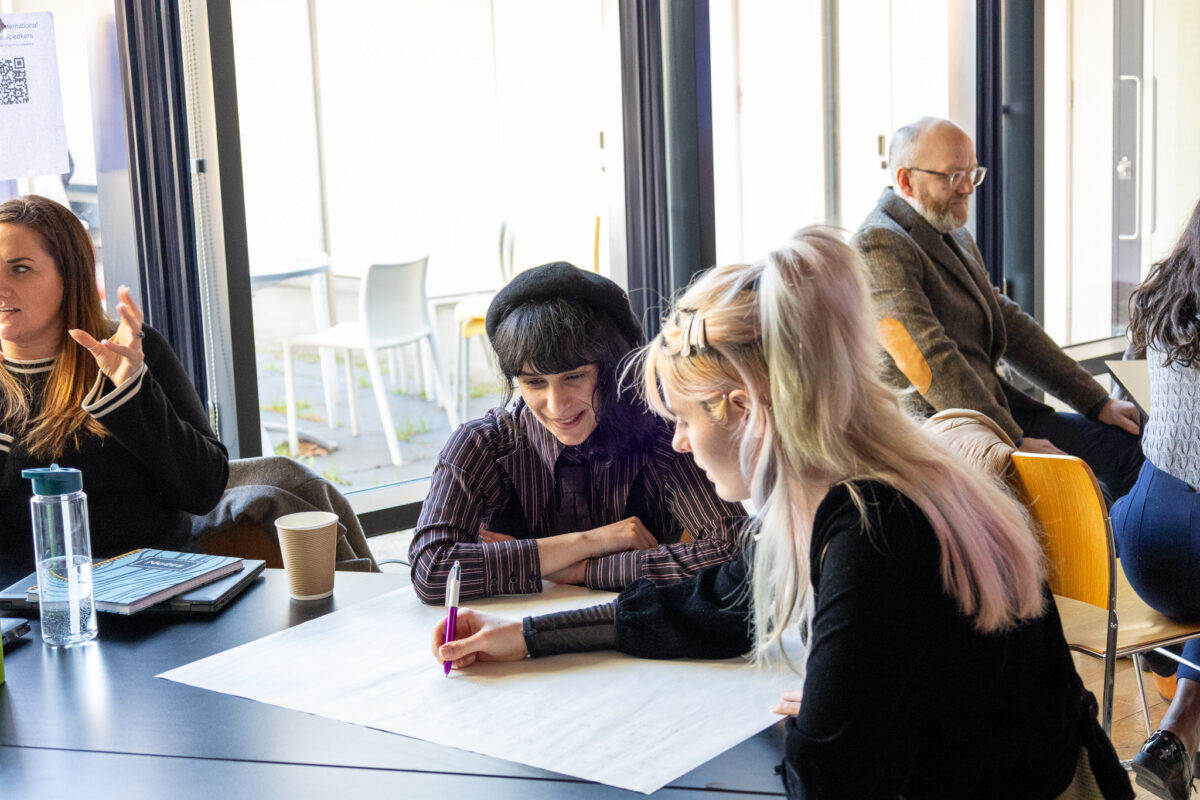Top five predictions for Diversity, Inclusion and Wellbeing in 2022

Over the course of the last 21 months, employees have faced significant challenges in work and at home. And, with the resulting stress that those changes bring, human resource (HR) departments have proved themselves key to protecting their colleagues when they can – often by evolving and adapting their wellbeing and mental health strategies so that their fit for purpose in a “new normal”.
So much so in fact, that Acas states that over a third of British employers claim their mental health support has improved since the beginning of the pandemic.
But there’s still more work to be done; particularly as we move into a new year where COVID-19 is almost as prominent as in 2021.
Now, it’s about applying a much more purposeful and data-guided approach to health and wellbeing initiatives – all of which should be inclusive of all groups of people.
Consolidating, defining and nurturing new ways of working
2022 will be about consolidating, defining and nurturing the new ways of working developed in lockdowns. To do so relies on offering better support to employees on an individual basis, not just a collective one. Many leaders strive for more productivity in the face of continued adversity, but there are new priorities that HR departments need to be getting right first.
The challenges brought on by COVID-19 meant that one-third (37%) of employees suffering from worse mental health now compared to pre-COVID-19.Prior to the March 2020 lockdown, people spent the majority of their time in an office. But as those offices closed, diaries started to fill with digital meetings instead. It was as if you almost had to have a call to do anything, which became frustrating to many.
Fortunately, organisations across the UK quickly recognised that this was unsustainable and made changes fast. The same needs to happen again in 2022, but this time with a focus on curating jobs that sustain wellbeing, diversity and inclusivity in hybrid environments – not just curate it for the first time.
An organisation’s HR team and senior leadership team should be asking themselves whether their current programmes positively impact all their staff – not just select individuals. To do so means hybrid working, flexible working, diversity, inclusion and wellbeing all need to be interconnected. It’s here, that data will play a crucial role, guiding the purposeful decisions that HR leaders and the C-suite make.”
As we enter the third year underpinned by the pandemic, here are my top five predictions for D&I and wellbeing in the coming year:
1. Inclusive mental health support
Employees have been more vocal about their working experiences over the last 21 months, be it burn-out, mental health, working hours, or just about their personal life overall. But 2022 will be about constructing new ways of supporting everyone; not just the select few.Take mental health. Organisations often find that men are less open with this topic. What’s more, groups of people are often impacted by mental health in different ways. Reports suggest that black people are four times more likely to be detained under the Mental Health Act than White people, while older South Asian women are an at-risk group for suicide.
Its therefore essential organisations design inclusive and equitable initiatives, such as implementing ‘human-less’ alternatives to mental health first aiders – like an app or video archive that provides mental health tips. What’s more, now is the time to “open up the floor” and create safe-space roundtables where colleagues can all learn from different minority groups. This year is really a year to engage with all your employees.
2. Greater support for women
Research shows that more women have been furloughed than men, and mothers and women from minority ethnic groups have also been especially impacted. Moreover, the World Economic Forum noted that closing the global gender gap has increased from 99.5 years to 135.6 years. This is a significant jump, further reinforcing why attrition for women should remain a core focus.
On the road to business recovery, in 2022, organisations will be looking at ways to appeal to a diverse pool of talent. Diverse teams allow for more innovation and productivity – so when women are no longer vastly underrepresented, including in senior positions, organisations can kick-start an effective and long-lasting culture shift. This is particularly important for the tech sector where harnessing innovation is a ‘must’. Yet as the sector is gender under-represented, if these organisations do not take on board these new considerations, they’ll quickly fall behind their competitors that do.
3. Inclusive, hybrid working
Many organisations have stated that hybrid working can lead to increased levels of diversity. What a lot have not done, however, is stress-tested this to ensure it is genuinely doing so. On paper, hybrid working looks to an employer as an attractive way to open the door up to a wider pool of talent. And if businesses get it right, they will certainly get more diversity of all different groups, and in senior roles too.
In 2022, organisations will need to ensure they remove any unintentional barriers to individuals’ career progression. In a hybrid culture, there’s always a risk that a divide will appear between those who do and who do not spend the majority of the time in the office, inadvertently creating a two-tier work force. Avoiding this will hinge on implementing flexible policies for parents and carers, for instance, or perhaps establishing a different type of flexible working policy for those whose jobs can’t be done from home.
The experiences of 2020 and 2021 ought to have taught us that presenteeism does not equate to value or capability. We must hold onto that lesson and remember that those out of sight should not receive less support than anyone else.
4. Great resignation
The Great Resignation is a growing concern, leading to employee resignations in high numbers. For instance, the FCA admitted to struggling to fill an abnormally large vacancy pool following a series of departures. After a year of turmoil, people are now considering what’s important to them in life. While HR may go into 2022 considering this as a concern this is a brilliant opportunity for D&I and wellbeing.
Organisations that ensure its culture nurtures what employees are demanding will not only be able to offset this trend but also welcome wider pools of talent. For example, this could be recognising female empowerment and female safety trends. In the wake of Sarah Everard, women have been calling out inappropriate behaviour. Organisations can play their part, be it creating safer environments, offering martial art lessons or putting in measures for female’s lone working. Elsewhere, it could be about recognising inequality and taking actions to voice your support, like publishing the (un-mandatory) ethnic minority gap.
It’s about identifying these social aspects and moments that are so important to the various groups and creating unique sets of support and benefits for these individuals. Organisations offering a value space with inclusion at the centre are the onesthat won’t see swaths of people leave, and better win over some of the best talent.
5. Data tells HR stories
As we know, employees are demanding more from their employers. Making the right, most effective decisions to win them over in 2022 relies on making am informed approach. People analytics is key here. Data teams are a massive crutch when supporting an organisation’s D&I strategies. The insight from analytics enables businesses to model and gauge employee experiences.
For instance, consider the use of ethnicity pay gap data. According to a new study by networking group People Like Us and Censuswide, at large, workers from black, Asian and ethnic minority backgrounds are paid just 84% of what their white colleagues’ earnings.
At Fujitsu, we use our ethnicity pay gap data – which we published voluntarily in 2021 – to inform the actions we need to take to ensure all ethnicities can thrive and to hold ourselves accountable for making progress. We’re seeing many more organisations voluntarily share their pay gaps as well. This is a great example of how the use of diversity data can inspire further change in an organisation – meaningful change for not just employees but society.
For organisations, deciding where their 2022 focus lies need to make data-informed decision. Importantly, HR teams need to use this approach to D&I data and replicate it towards wellbeing. For example, how do we understand what employees are feeling, beyond using absence data? Data tells us stories and it’s about using analytics really intelligently, beyond just asking our people “are you well?”
Adopting data strategies to drive decisions is critical, especially now with the highly dynamic working conditions. HR should look to use the likes of employee insight, engagement survey results and people data to track wellbeing. The HR function should be deliberately and continuously making strides to keep engagement high, and employees satisfied.
The ultimate fallout from the COVID-19 pandemic remains to be seen
But what is clear is that HR and DE&I professionals can carve out their own, more positive legacy from this difficult period to ensure the next generation of their workforce are empowered to be even better than the last.
While restrictions and lockdowns will undoubtedly have an impact, 2022 is the year that equity, remote and hybrid become less buzz words, and more so actionable initiatives with tangible outcomes











Responses